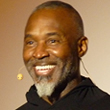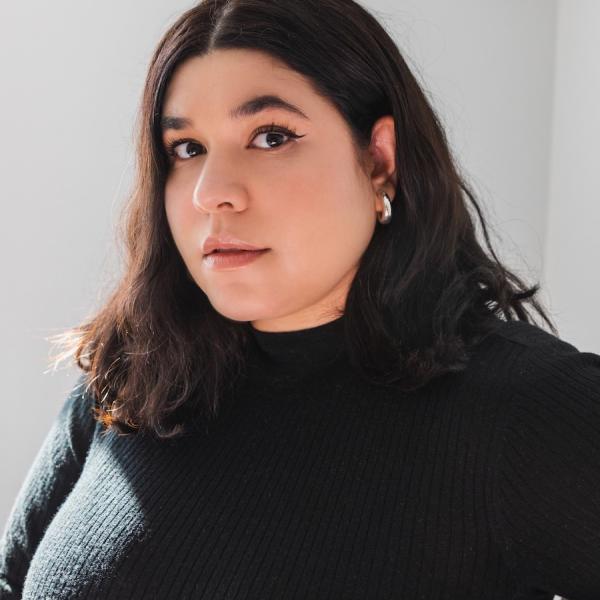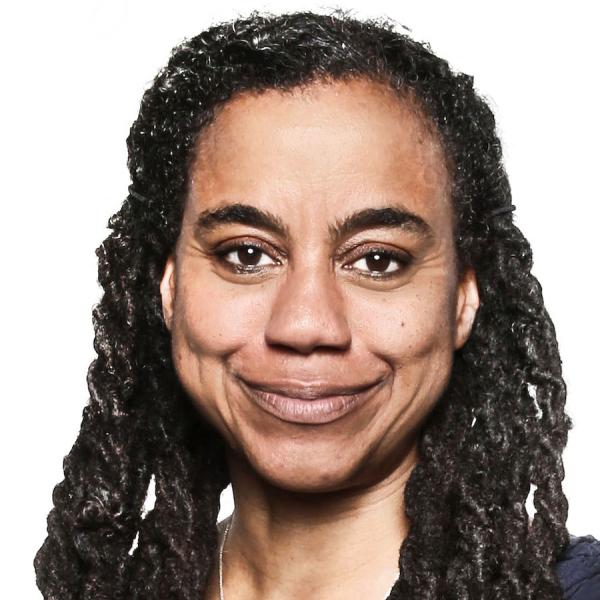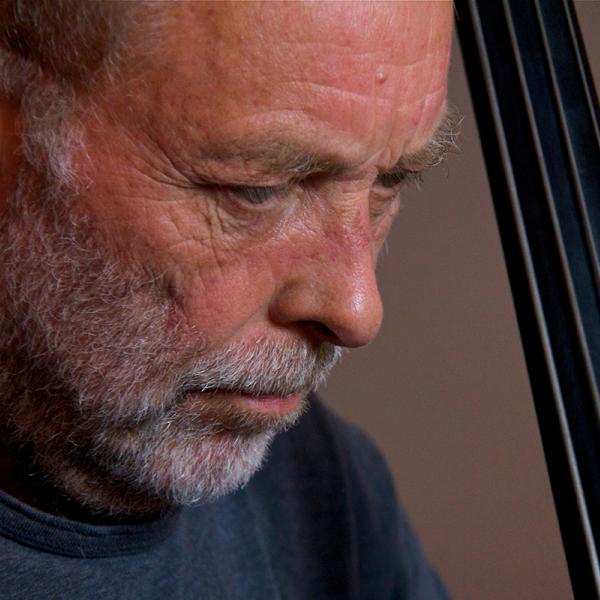Nick Cave

Photo by Matias Roskos
Nick Cave—Podcast Transcript
Nick Cave: I've always been involved in the arts. I was always a maker as a kid and I always collaborated with other artists. I mean, I was saying last Sunday that I was just as excited tonight about where I'm at in my career as I was when I was 21-years old. I'm still hungry, I still am curious about new ideas, new- new ways of thinking, making, it's just great.
Jo Reed: That's Chicago-based artist, Nick Cave. He was chosen as one of the artists for the Art-in-Embassies program. Welcome to Art works the program that goes behind the scenes with some of the nation's great artists to explore how art works, I'm your host, Josephine Reed.
The Art-in-Embassies program is unique in the diplomatic world. It's aim is to engage, educate, and inspire global audiences, showing how art can transcend national borders and build connections among peoples.
A public-private partnership, Art-in-embassies engages over 20,000 participants globally, including artists, museums, galleries, and universities. Professional curators and registrars create and ship about 60 exhibitions per year to US Embassies. Most of these works are on short term loan. However, since 2003, over 58 permanent collections have been installed in the Department's diplomatic facilities globally with a focus on contemporary art and artists from the U.S. Together, these temporary exhibitions and permanent collections provide international audiences with a sense of the quality, scope, and diversity of American art and culture.
In the last decade, as part of the program, more than 100 artists have traveled to other countries and collaborated with local artists to produce works now on display in embassies and consulates.
One of these artists is Chicago-based sculptor and performer Nick Cave. Nick Cave, whose background is in fabric arts, fashion design and dance, is known is for his colorful elaborate costumes he calls Sound Suits. Combining art, dance and fashion, Sound Suits have reminded viewers of mardi gras costumes or African Masquerade robes. Sometimes they're made of twigs, others are made of thousands of buttons, and still another was constructed of beanie babies. The height of the sound suit is frequently magnified by extravagant head gear, like a domed miter that a Bishop might wear. When worn, they often swosh or rustle, so that the movement of the suit results in a kind of music. Nick Cave came to Washington DC for a 50th anniversary celebration of the Art-in-embassy program. And I had a chance to speak with him before the reception began. So you might occasionally hear a clatter of plates. I began our conversation by asking Nick to describe a sound suit in his own words.
Nick Cave: You know, a Soundsuit is a sculptural form that is applied to the body. The form is made out of materials, surplus that is a cumulation of thousands of one object, the same object. But what makes sound is when you put it on and you start to move. And the materials may create a rustling sound. For example, that could be created out of twigs or if it's all out of raffia, or I could make a tingling sound, which could be where an entire sculptural form is covered in buttons, so it's really the material and how it's applied to a surface, and it's very visceral, so there's a lot of texture and when you touch it, it has depth, it has dimension. But the extraordinary thing is, is that you can stand still and it can be silent. Or the moment you start to move, it could make noise from the fact of it rubbing against itself, or you jumping up and down.
Jo Reed: Now do you design them to be seen on a form, in a gallery or a museum, or are they really designed for people to wear and have as part of a performance?
Nick Cave: You know, as I've been doing research, and as I continue to sort of look at ceremonial and ritual sort of costume dress from around the world. I have to remember that I'm looking at these artifacts that have been pulled out of environments and out of cultures and placed into a museum setting. So they become static. So I'm forced to look at them as an object, not as the way in which they may function within a particular cultural and so that sort of has led me to think about the duality of it as a sculptural form, as a static object, as well as the potential of it being brought to the body and moved, and used through this performance venue. There is a difference, it's a different type of orchestration in terms of how they're constructed, when it's for performance. I've got to take into consideration the stress that is brought to the the object. The materials, what can hold up to movement, to just these various stress points, so it does take a different type of, well, thinking and making.
Jo Reed: It's interesting, because I've seen your work, I've been fortunate enough to see your work in performance, and I've seen your work in galleries, and I have to say, when it's in galleries, I always keep wanting to touch it. It's very hard not to-- not to do that.
Nick Cave: Right, and I think in- in the gallery, what I hope that's happening, when one is viewing the work, is that it's really about providing this dream state, this ability to look at it and just imagine what- what is it, what role does it play within the larger scheme of things, how does it move, what is the weight of it? And you're confronted with the unfamiliar, because it's really this sort of hybrid, maybe there's an element that's Haitian influence, but it also could be me looking at the miter hat from a Catholic u- uniform, or it could be me looking at an astronaut suit, but putting these all together to come up with this new sort of shape.
Jo Reed: What I find really interesting about your work is that I'm talking quite specifically now, about seeing it in a gallery, is that it invites me both inside and outside at the same time, imagining what it looks like moving, but then I imagine what it would be like being in it.
Nick Cave: Mm-hmm. Well you know, being in it, the thing that's amazing is and really what the work is about, is that it hides gender, race and class, so you're forced to be confronted with something that is unfamiliar. It can't be categorized. You know, we tend to live in a world where we want to-- we want to be able to find its placement and here, I think it's-- is its own origin, it's its own entity within itself, within its own world, but it's extraordinary to be inside, because what it does as the wearer, it allows you the independence to move and to express yourself freely.
Jo Reed: And you're expressing yours-- it grows you; it literally is larger than life, and you're-- you know, you get to express your body's limit.
Nick Cave: Yeah, it's-- and it's a lot of demands that it places upon you. You know, my recommendation is that you don't put it on first, you set with it, and you think through what perhaps, is it going to feel like? What is the weight of it? You have to somehow come to a place where you're able to surrender, to move into this other sort of space within yourself. Because really it's about conviction, I don't want to know that there's a person in it, as opposed to it has now become its living being, presence, self. So you know, I recommend that when you put it on, you just settle, and you slowly wait until you have made that transition before you then start to move. Because if you do not, you can really get a bit out of control and lose your center, and then you sort of fall apart.
Jo Reed: It's almost like waiting until it becomes part of your skin.
Nick Cave: You've got to come to the middle.
Jo Reed: Now what inspired these?
Nick Cave: Well you know the first suit was a twig suit. And it was in response to the Rodney King incident in '92. Prior to that, I was doing large paintings, and these constructions that started on the wall to the floor. But you and I'm grateful to have, you know, art as a means of expression, because the Rodney King incident affected me so strongly that I really was struggling with myself as a black male, and feeling that the moment that I step outside of the privacy of my home, you know, I could be racially profiled so I just thought it made me think about feeling discarded, dismissed, less than, devalued, and so what I wanted to do was to sort of respond to that feeling, and I happened to be in the park one day, and I was just thinking about my emotions and you know, as I was reading more and more about the- the case. I looked down and there was a twig, and I thought, I don't know, I knew that that's what I needed to make this object out of. And because it spoke to me on those multiple levels, something that was dismissed, discarded, irrelevant. And so I then made this sculpture, which was a pant and a jacket. I didn't even think I could put it on. I didn't know what was going on in my head. I was just thinking of it-- of it as a sculptural form. And then, once I put it on, I started to think about this-- it functioning as a suit of armor, something to protect my spirit from the outside world. And then when I started to move in it, I started to think about the role of protest, in order to be heard, you've got to speak louder. So it just started unfolding more and more, references and connections to the role of an object, the role of a form that it's unfamiliar, the uncomfortablenss and within that, the confrontation within that, and, you know, it was a bit scary. And so I thought about, you know, it's difficult, you know, when you're crossing the street, and you hear someone car door locks going off, and you're just like, it's a little strange. But this is how I sort of was able to come to this form, and then from that point forward, I- I've always have made a very conscious decision to always make the work out of discarded materials.
Jo Reed: And that's exactly what I was going to ask you. Why that decision?
Nick Cave: Because, you know what, at the same time, there's a lot of humanitarian sort of, efforts that I brought to my work, that subconsciously I wasn't even aware of, and that being one that I'm interested in the ideas around this excess in terms of surplus. I'm interested in just the amount of things that we just sort of throw away, and- and yet there's other alternative ways in which they can be sort of reintroduced back into the world.
Jo Reed: You know, it's interesting, because there is a sense of play in the art that you produce, and a sense of play in the way you want to nudge different categories back and forth. And I think one often thinks of play as frivolous, rather than as a quite serious way to approach art, but also politics, life…
Nick Cave: Yeah, I mean, that goes, I think to some of the forms that I sort of have created within the work. There's a shape that looks like a shape of a missile, that I use in- in developing some of the shape comes from me, sort of l- looking at ideas around power, power and dress, and so I was looking at the Klan's uniform, the shape of the head gear, the shape of a missile, the shape of the miter head, the shape of a condom and intersecting these four ideas brought me to this sort of form. And so I look at this form as this sort of high priest of sorts. It just has this presence about it that is very larger than life in a sense. So you know, I'm looking at that, I'm looking at ways in which I sort of choose to move through the world, I mean, there's a number of suits that are made out of these sifters, the- the façade, the face of it, or made out of these large sifters, and the sifters are covered in wire and bugle beads but you can see through it, and then the rest of the entire garment is constructed out of buttons found shell buttons. And so what I'm doing is sort of censoring and filtering how I move through the world. So it's- it's me sort of setting up these sort of arrangements or circumstances that I perhaps may fall into, how do I prepare myself to, sort of exist within that moment, and then sort of navigate within that, at the same time, protecting my core.
Jo Reed: Like a series of negotiations.
Nick Cave: Mm-hmm.
Jo Reed: As you said, you create these garments, these works of art with found objects. Do you conceive of the design and then look for the objects, or do you let the objects tell you what they want to be?
Nick Cave: Yeah. You know what, that's exactly what I do. I spend a great deal of time at flea markets, thrift stores, second hand stores, and you know, I have my staple objects that I sort of collect, that I need for a- a lot of my work, but there's always the new materials that occur. And basically, that is the beginning of a new piece. It's the object is the negotiator, it's what provokes, it's what enforces, it's what triggers a new idea. I don't sketch, so it really is that thing, that object that I find that will just set me on fire sometimes-- I'm jus-- sometimes I am crazed, I have no idea why, but I think what I do is that when I look at objects, I look at the potential that lies within it, that, yes, it may function as this, but does it have the ability to provide multiple readings? And that's when I know that it's a go.
Jo Reed: They're so labor intensive. Now do you have people who work with you?
Nick Cave: Yeah, I have a team in the studio that works with me. They all come from that sort of skill base. You know, and so we're looking at you know, a lot of the ways in which we approach the construction, is looking at couture sensibilities, how a garment is built, majority is all hand built, on occasion we may sew something on the machine, but most of it's pretty much hand built and put together by the handwork that we do. But it's--
Jo Reed: And nothing is glued.
Nick Cave: Never, ever, ever. And then I work with a number of fabricators that may build the apparatuses that are needed for the work, or they may build the sculpture component that is then supported by the figure.
Jo Reed: And so we're back to collaboration.
Nick Cave: oh yeah. You know, and also in the studio, the studio is a collaboration. It's me, sort of working with the team, and we sort of come together, we-- I- you know, I talk about the next body of work, what my intent is, how I want it to bevdeveloped, to inform them on, you know, what we're working on currently is here right in front of us, but I like to keep everyone thinking about the next project down the road, so as we arrive to it, they're already have prepared themselves. So it's a number of wheels turning at the same time.
Jo Reed: Now you also teach. What do you try to impart to your students in a classroom?
Nick Cave: You know, I teach at the grad level at the School of the Art Institute of Chicago, in the fashion department, and I am the director of fashion, body and garment, which is the graduate program. So I'm working with a number of students that are interested in two different sort of directions; one is collection based, the other is conceptual based. But the core of this program is that they both need the support of the body in order to- to help facilitate their ideas, so it's really quite fascinating to be in a- in a program where, you know, there's just people working in these sort of multiple sort of trends, interdisciplinary sort of ways. Some people are doing video work, some are doing performance work, some are making clothing, some are making objects, but it's the body which is the, sort of infrastructure that they all need, and that's what's interesting. So what I do, you know, as an advisor, you know, I just try to build a trust within themselves. They've got to trust themselves in order to reach, sort of revelations. They've got to be able to carry out ideas, so you know, it's not that the first idea works, it may be the 30th one that works. So you've got to sort of be up for failure, and I think failure is where the learning really begins anyway.
Jo Reed: Yeah, because if you're always trying to be perfect, what can you ever do?
Nick Cave: Yeah, right, and that's how I sort of really run my studio. It's, I know what I'm doing, but I'm very loose about what happens, as we develop a piece, and very much open to-- at any given moment, it could take a different direction.
Jo Reed: Now you also are committed, and have always been committed to doing work in the community as well as in the academy. Talk about what drives that commitment.
Nick Cave: Well, you know, I wrote this quote down, maybe 20, maybe 30 years ago, and it was: "I'm working toward what I'm leaving behind." And so that has been my sort of my mission, that's the goal, that's the sort of, idea that I have in my head, but you know institutions, museums, galleries, that's great, you know, I love it, I do, I've made some projects in those settings, but not everybody gets there. And I want to be able to, within a, let's say an institutional sort of project, that there is this outreach component that is very important to me. I want to be able to bring my work into communities and- and to help if anything, help motivate, help trigger, help jump start, the sort of creative way of thinking about ideas around the imaginary sort of space and place within our heads. And to also think of ways to get to these individuals, these communities that don't frequent the museums, a way to get them there, you know, start a project out in the community but yet, perhaps it's then performed within the museum, institution or in both environments. So it's just something that really makes a big difference.
Jo Reed: Do you see the work you do in the community actually influencing your art?
Nick Cave: Oh totally. What it does for me, it just sort of answers the questions in terms of what I'm interested in, in my studio is the role of performer, within my work. How does my work perform out there? It doesn't matter if it's in a museum setting or a gallery setting, or in the public realm, how does it perform? I don't learn about my work in the studio, I learn about my work once it leaves my studio.
Jo Reed: Over these past 20 years how has your art and particularly Soundsuits, how have they evolved?
Nick Cave: You know, I set markers for myself. And what that means, for example, that there's a number of ways in which I work, you know, there's my gallery exhibitions, some with the Jack Shainman Gallery in New York, so you know, every three, four years, I do, I have a solo show. And so that becomes a marker. I have to rise to my own occasion, that is probably the most critical thing is that I cannot, and will not create the same experience. Secondly, I have these dream projects, and these dream projects are projects that are budgets that I possibly cannot ever create on my own, and that are presented to me through various opportunities and these are platforms that allow me to think outside of the box, to create these ideas that have only I can only imagine in a dream, and to bring them to fruition. That's the other sort of way in which I work. And then, right now, I'm in the process, well I have already sort of moved a bit away from Soundsuits, and I'm moving more into just sculpture.
You know, my body was sort of working through it, has been for a while, I've been thinking about it, reflecting on it, and it's just naturally shifting, and I'm totally excited about the new work.
Jo Reed: And that's my final question. What are you looking forward to?
Nick Cave: You know, I'm looking forward to continuing to produce and make quality and strong work that can be a platform for the art world.
Jo Reed: Okay, Nick Cave, thank you so much.
Nick Cave: Thanks.
That was Chicago-based artist, Nick Cave
You've been listening to Art works produced at the national endowment for the arts. Adam Kampe is the musical supervisor
Excerpt from "Foreric: piano study" from the album Metascapes, composed and performed by Todd Barton, used courtesy of Valley Productions.
The Art Works podcast is posted every Thursday at www.arts.gov. And now you subscribe to Art Works at iTunes U-- just click on the iTunes link on our podcast page. Next week, writer, producer and Hollywood legend, Frank Price.
To find out how art works in communities across the country, keep checking the Art Works blog, or follow us @NEAARTS on Twitter. For the National Endowment for the Arts, I'm Josephine Reed. Thanks for listening.
Nick Cave, chosen to participate in the U.S. State Department's Arts-in-Embassies program, talks about his Sound Suits, a unique blend of sculpture, fashion, and dance.




